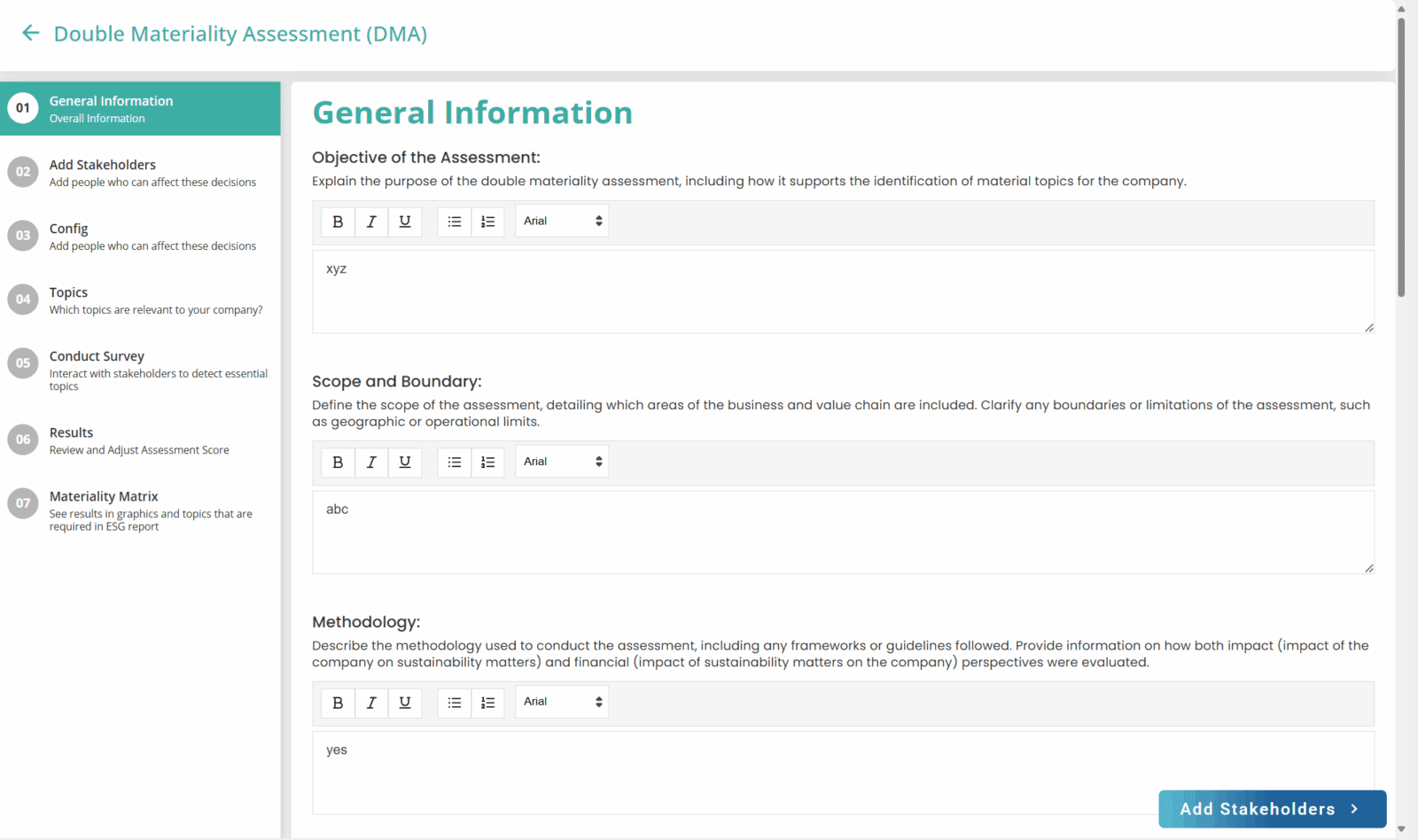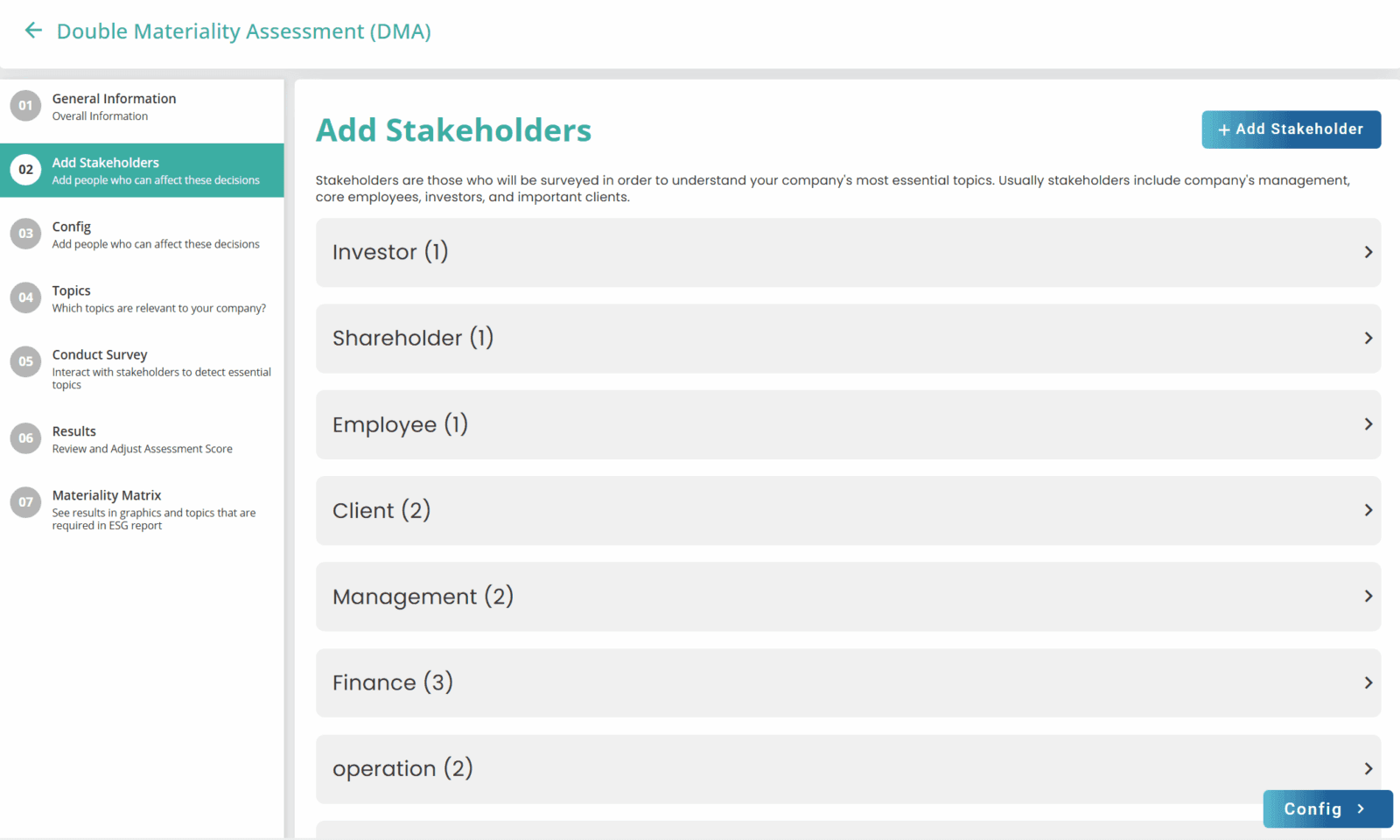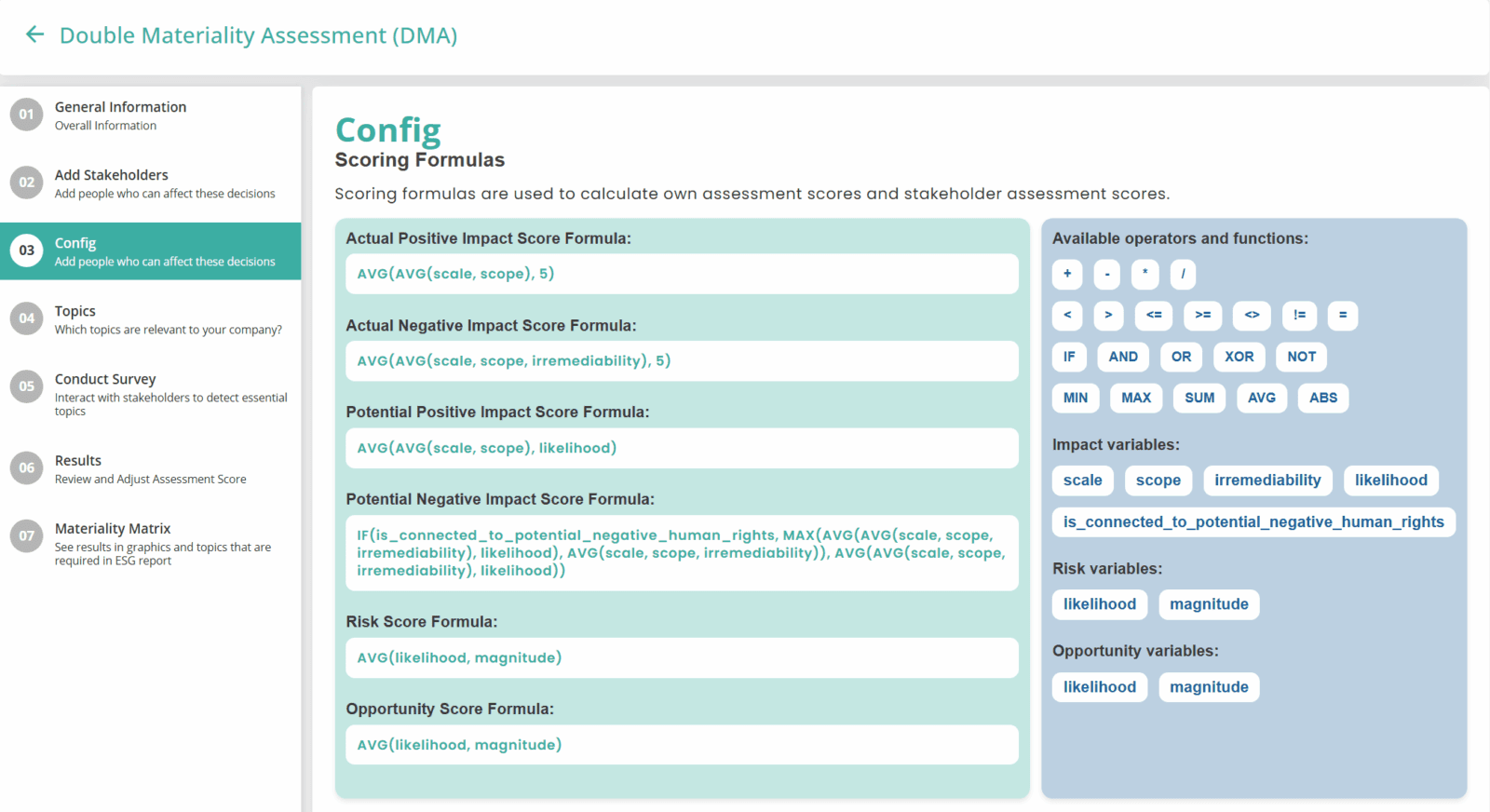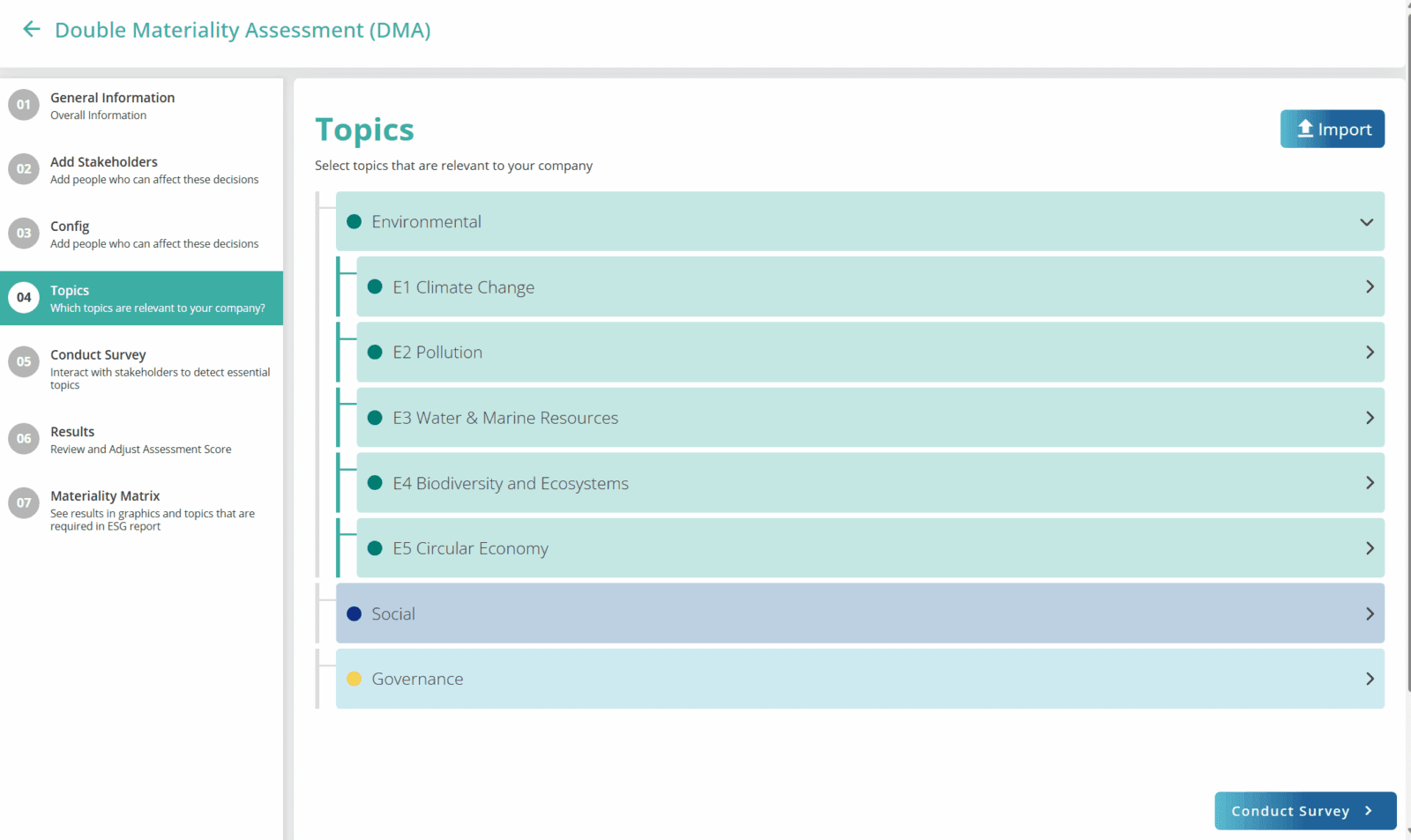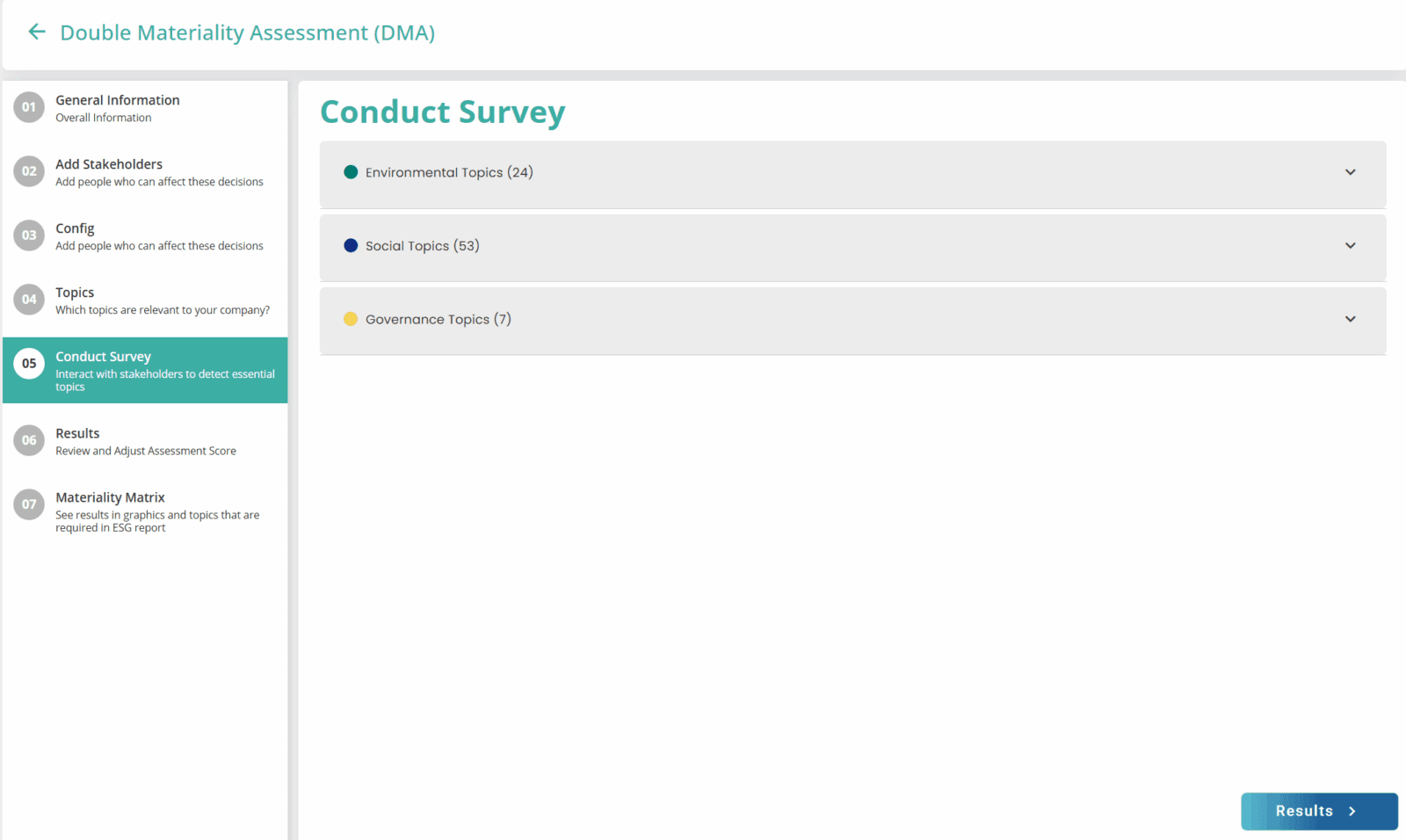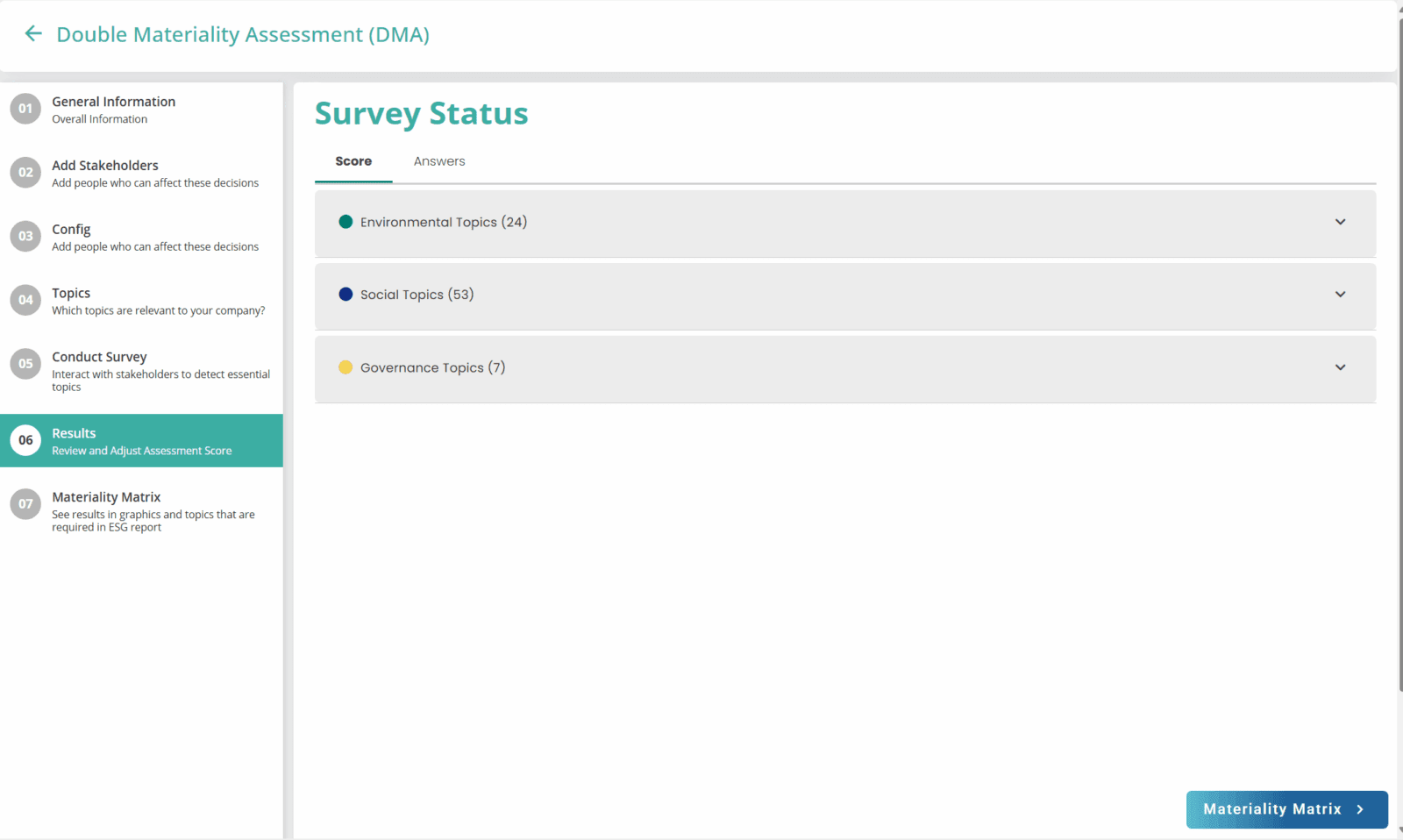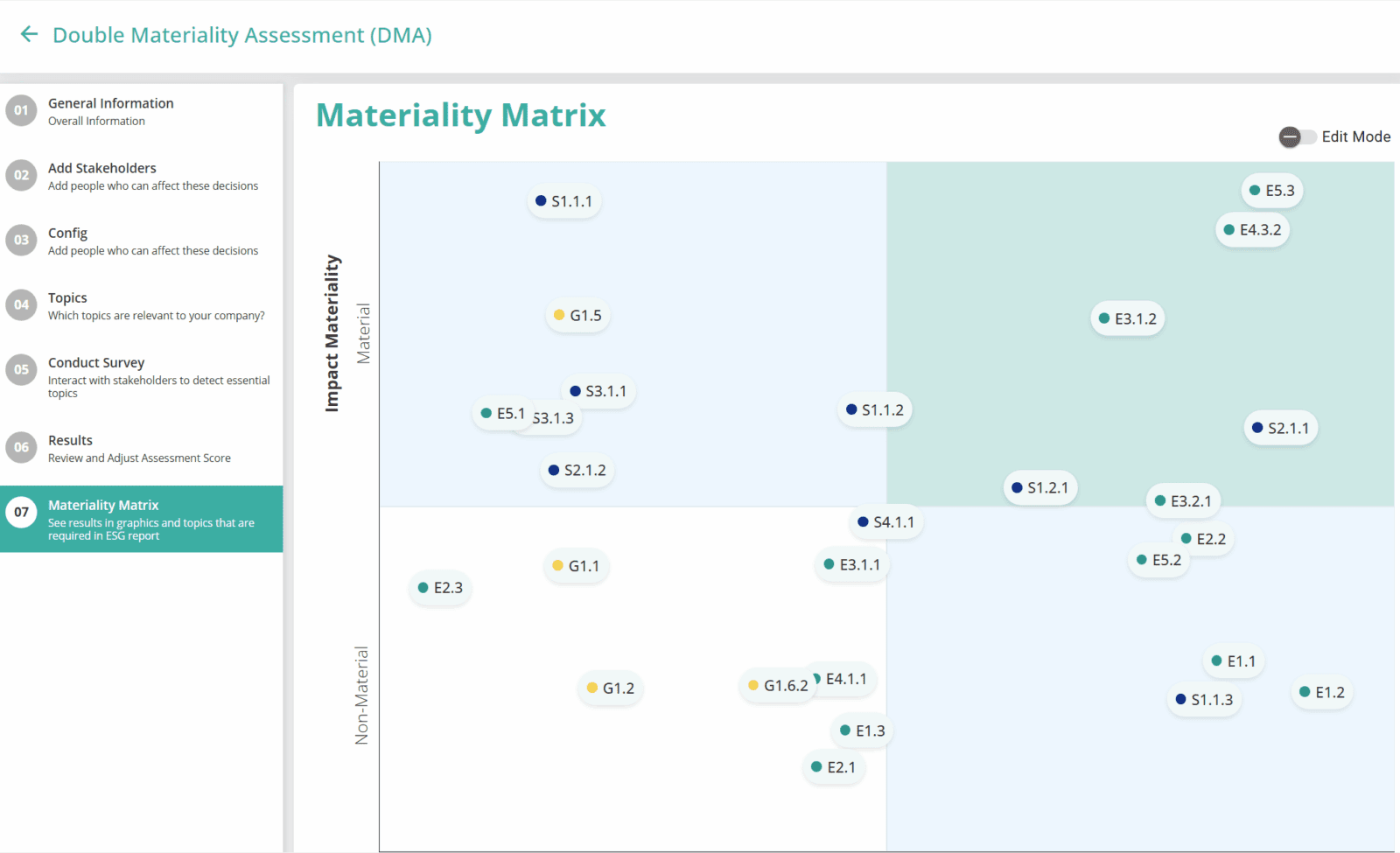Frequently Asked Questions
While the Omnibus Package has exempted many SMEs from mandatory CSRD reporting (particularly those with fewer than 250 employees or under €50M turnover), voluntary ESG reporting still provides significant strategic value.
Here’s how SMEs can benefit from ESG reporting even if it’s not mandatory:
1. Build Trust with Investors & Financial Institutions.
2. Strengthen B2B Partnerships.
3. Enhance Brand & Market Differentiation.
4. Track Internal Impact & Drive Efficiency.
5. Prepare for Future Regulations.
Visit our Section – What Makes Us Unique – Sustain Suite
Yes! We offer a 1-month free trial including access to our DMA tool, EU Taxonomy, and GHG Emissions tracking modules. It’s a great way to experience our platform risk-free.
Yes. Sustain Suite offers tailored modules for different industries, including manufacturing, finance, real estate, logistics, and energy. You can customize your ESG goals and KPIs accordingly.



